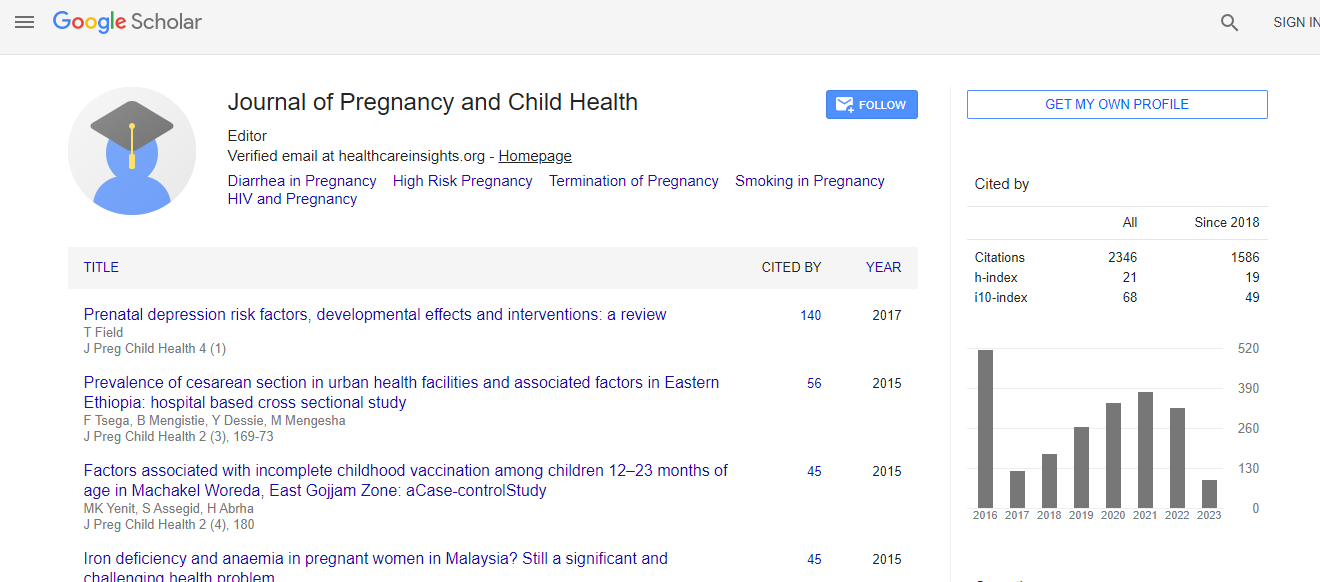Research Article
Factors Associated with Delivery of Very Low Birth Weight Infants in Nonlevel III Neonatal Intensive Care Units
Ingrid Mburia1,2*and Wei Yang1,31Environmental Sciences and Health, Graduate Program, University of Nevada, Reno, Nevada, USA
2Office of Public Health Informatics and Epidemiology, Nevada Division of Public and Behavioural Health, Carson City, Nevada, USA
3School of Community Health Sciences, University of Nevada, Reno, Nevada, USA
- *Corresponding Author:
- Ingrid Mburia
Environmental Sciences and Health
Graduate Program, University of Nevada
Nevada, USA
Tel: 17754616600
E-mail: imburia@nevada.unr.edu
Received date: July 31, 2016; Accepted date: October 28, 2016; Published date: October 31, 2016
Citation: Mburia I, Yang W (2016) Factors Associated with Delivery of Very Low Birth Weight Infants in Non-level III Neonatal Intensive Care Units. J Preg Child Health 3:290. doi:10.4172/2376-127X.1000290
Copyright: ©2016 Mburia I, et al. This is an open-access article distributed under the terms of the Creative Commons Attribution License, which permits unrestricted use, distribution and reproduction in any medium, provided the original author and source are credited.
Abstract
Introduction The objective of this study was to examine the factors that influence delivery of very low birth weight infants in non-level III neonatal intensive care units (NICUs) in Nevada. Maternal, infant, behavioural, clinical and geographical factors were assessed. Methods A population-based study was conducted using electronic birth records from 2010-2014 for 980 singleton liveborn infants weighing 500 g-1499 g. Multiple logistic regression analyses were conducted to assess the risk factors associated with delivery in non-level III NICUs. SaTScan was used to identify spatial clusters of VLBW neonates and ArcGIS was used to map the distance from the mother's residence to the nearest level III NICU. Results During the study period, 2010-2014, 88.6% of the infants were born in a level III hospital. Of these, half (50.5%) required ventilation immediately and about quarter (24.3%) were transferred within 24 h of delivery. Majority of the mothers (85.6%) lived within 10 miles to the nearest level III NICU. About half (46.8%) of the women who delivered in a non-level III NICU were overweight or obese, 10% smoked during pregnancy and 26.1% received late prenatal care. The most common method of delivery was via caesarean section (57.7%). Factors associated with delivery of a VLBW infant in a non-level III hospital included: distance (>50 miles), race/ethnicity (Asian and Black) and education (<12 years). Conclusion In this study, 11.3% of the VLBW deliveries took place in a non-level III NICU even though majority (85.6%) of the mothers lived less than 10 miles from the nearest level III NICU. Transportation and access to specialized health care services may be a barrier to women of certain race/ethnic groups and low socioeconomic status. Providing transportation to women in rural areas and those from low-income neighbourhoods in urban areas could increase access to risk appropriate care.

 Spanish
Spanish  Chinese
Chinese  Russian
Russian  German
German  French
French  Japanese
Japanese  Portuguese
Portuguese  Hindi
Hindi 
